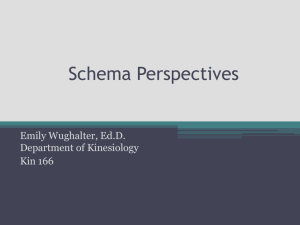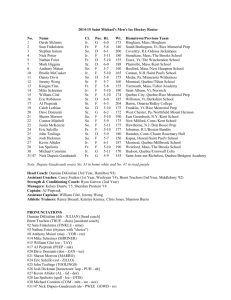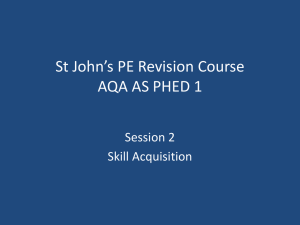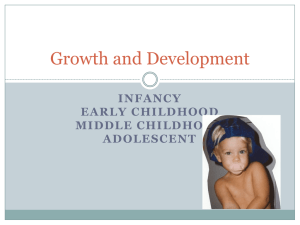LMRVT-KIDS Motor development and learning
advertisement
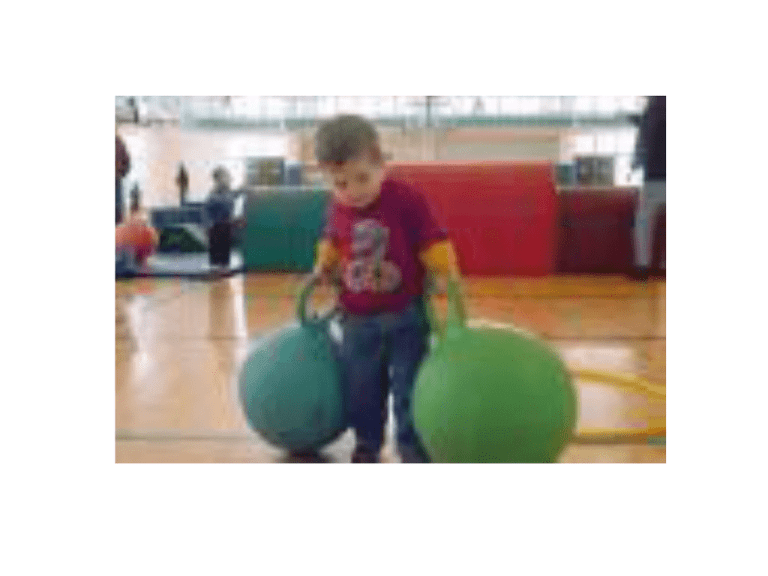
Important distinction • Motor learning (little research) vs. • Motor control and development (more research) Motor control & development • Fair amount of work done in framework of “dynamical systems” • Key point: Interaction of SUBJECT-TASKENVIRONMENT Example: Non-linear dynamics • Example – Newborn stepping reflex – Reflex “disappears” within a few months – Traditional explanation is that cortical maturation inhibits reflexive movement – However pattern is seen when child is on the back, with limbs in different relationship to gravity – Stepping reflex disappears because legs gain weight rapidly; can’t lift in upright posture – Implication is that development is not necessarily (all) about brain control, but is rather about interactions of tissue and environmental factors Relevance for LMRVT 5-10 • “Raspberries;” /m/, etc. vocal tract” • Helps to abduct vocal folds (good: counteract hyperfunction) • Helps to oscillate vocal folds (good: intensity) – “Semi-occluded – Titze, 2010 Motor learning • Schema theory (Schmidt, 1975; 1976) – Recall and recognition schemata – Motor program and parameters Schema theory predictions • (1) Importance of perception in motor learning – Perceptual preexposure (tracking task, Adams & Creamer, 1962) – Observational learning (juggling; sign language; dance; surgery; review by Schmidt & Lee, 2010) • Learner’s active responses to exposures appears important for the effects • Effects mediated by mirror neurons? • (e.g. Rizzolatti & Craighero, 2004) http://www.6seconds.org/imagesstatic/neuron.jpg Relevance for LMRVT 5-10 • LMRVT 5-10 consistently pairs perception and production in voice training Schema theory predictions • (2) Importance of attention to movement outcomes (not biomechanics) – Extensive work by Wulf & colleagues Relevance to LMRVT 5-10 • Child’s attention is directed to voice outcomes (buzzy, easy voice), not biomechanics Schema theory predictions • (3) Variable practice should enhance generalization – Seen for numerous tasks from bean bag throwing to arm displacement – Finding may be heightened for children compared to adults • Effects particularly enhanced under random practice conditions – Review by Schmidt & Lee, 2010 Relevance for LMRVT 5-10 • Child practices buzzy voice in numerous phonetic, physical and emotional contexts Consistent with schema theory • (4) Infrequent (terminal) KR improves learning in general • (5) Whole practice improves learning for “whole” tasks Relevance for LMRVT 5-10 • Use of infrequent terminal KR • Use of whole practice (with rare exceptions)
